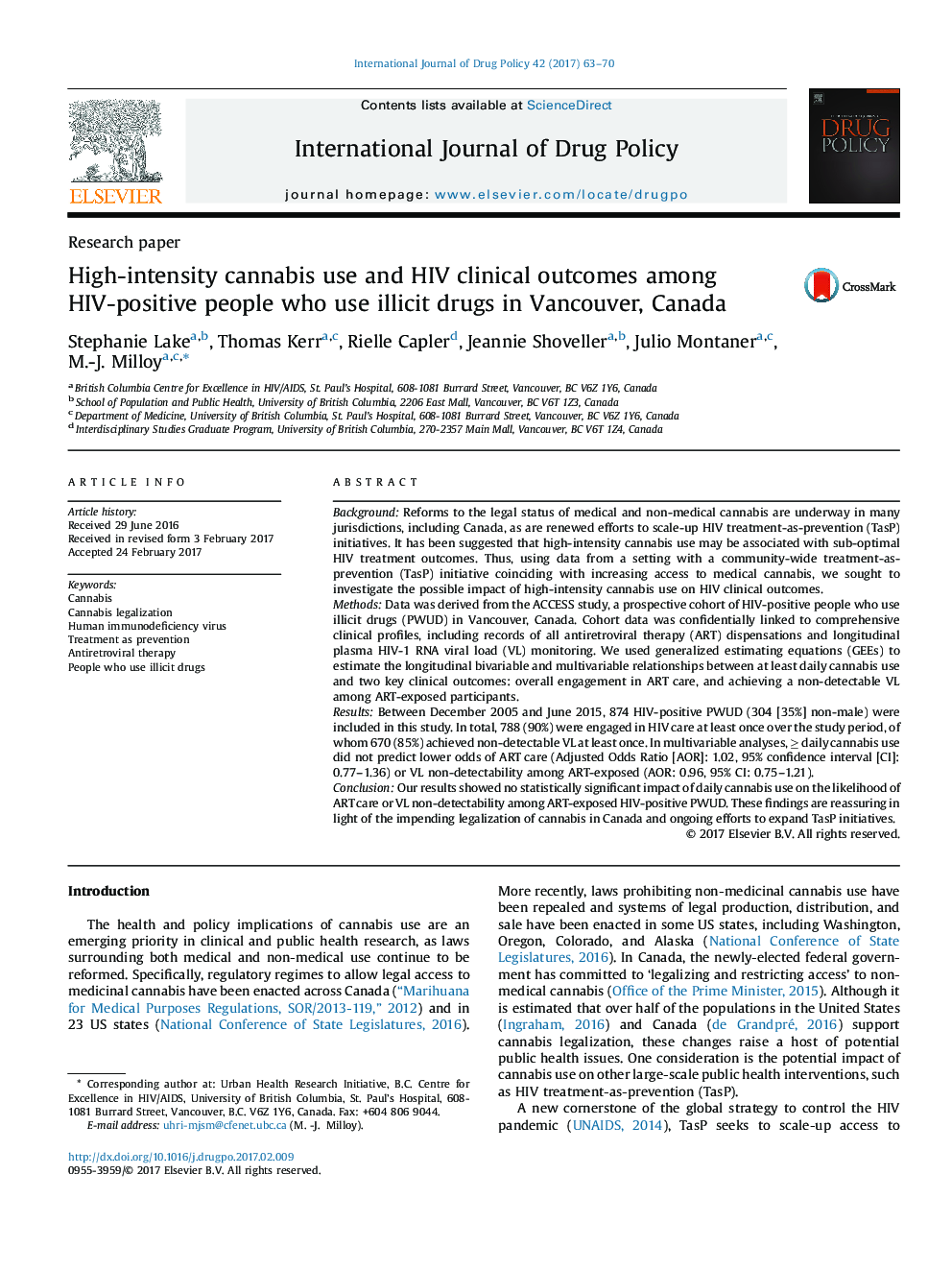| کد مقاله | کد نشریه | سال انتشار | مقاله انگلیسی | نسخه تمام متن |
|---|---|---|---|---|
| 5120780 | 1486263 | 2017 | 8 صفحه PDF | دانلود رایگان |

BackgroundReforms to the legal status of medical and non-medical cannabis are underway in many jurisdictions, including Canada, as are renewed efforts to scale-up HIV treatment-as-prevention (TasP) initiatives. It has been suggested that high-intensity cannabis use may be associated with sub-optimal HIV treatment outcomes. Thus, using data from a setting with a community-wide treatment-as-prevention (TasP) initiative coinciding with increasing access to medical cannabis, we sought to investigate the possible impact of high-intensity cannabis use on HIV clinical outcomes.MethodsData was derived from the ACCESS study, a prospective cohort of HIV-positive people who use illicit drugs (PWUD) in Vancouver, Canada. Cohort data was confidentially linked to comprehensive clinical profiles, including records of all antiretroviral therapy (ART) dispensations and longitudinal plasma HIV-1 RNA viral load (VL) monitoring. We used generalized estimating equations (GEEs) to estimate the longitudinal bivariable and multivariable relationships between at least daily cannabis use and two key clinical outcomes: overall engagement in ART care, and achieving a non-detectable VL among ART-exposed participants.ResultsBetween December 2005 and June 2015, 874 HIV-positive PWUD (304 [35%] non-male) were included in this study. In total, 788 (90%) were engaged in HIV care at least once over the study period, of whom 670 (85%) achieved non-detectable VL at least once. In multivariable analyses, ⥠daily cannabis use did not predict lower odds of ART care (Adjusted Odds Ratio [AOR]: 1.02, 95% confidence interval [CI]: 0.77-1.36) or VL non-detectability among ART-exposed (AOR: 0.96, 95% CI: 0.75-1.21). Upon testing for potential interactions, ⥠daily cannabis use was found to be negatively associated with ART engagement during periods of binge alcohol use (p < 0.05).ConclusionWith the exception of frequent cannabis use during periods of binge alcohol use, our results showed no statistically significant impact of daily cannabis use on the likelihood of ART care or VL non-detectability among ART-exposed HIV-positive PWUD. These findings are reassuring in light of the impending legalization of cannabis in Canada and ongoing efforts to expand TasP initiatives.
Journal: International Journal of Drug Policy - Volume 42, April 2017, Pages 63-70